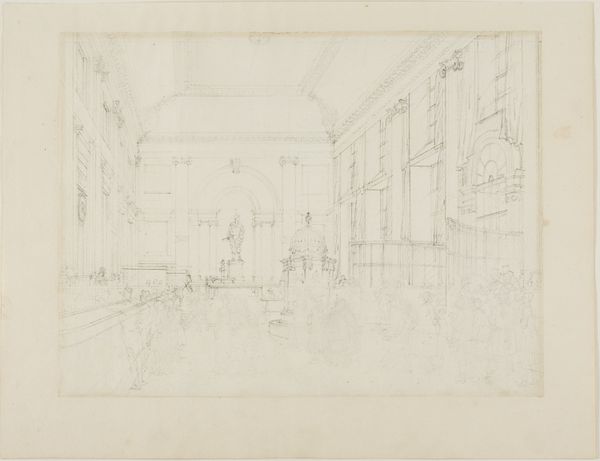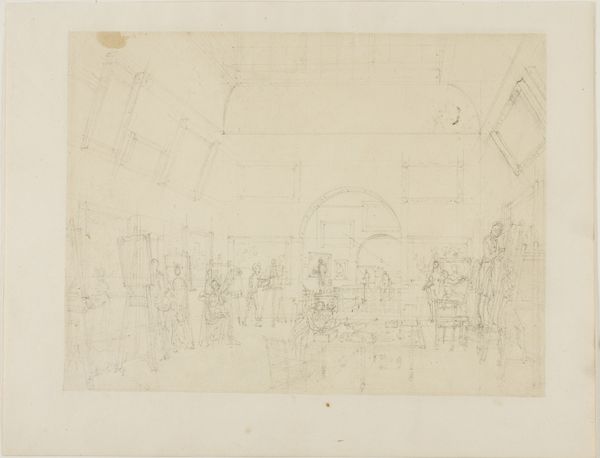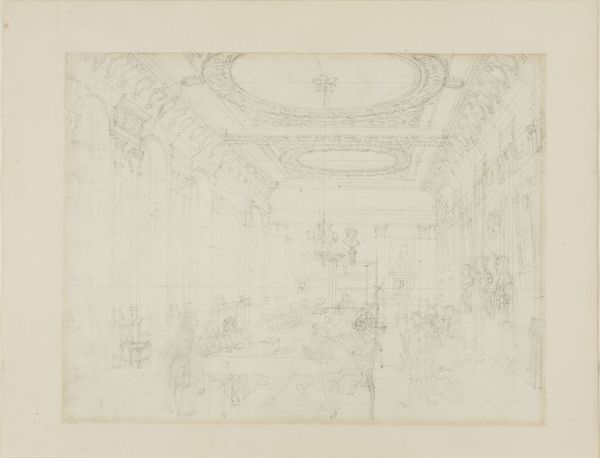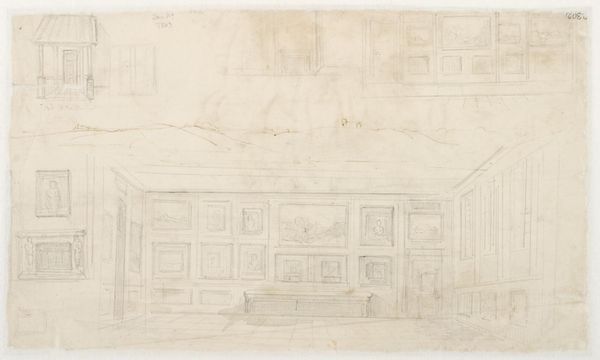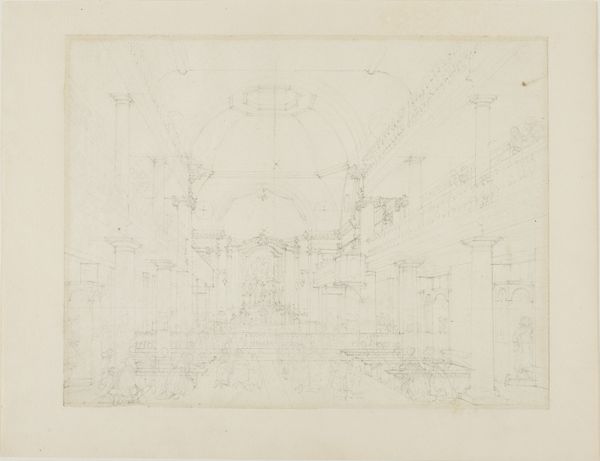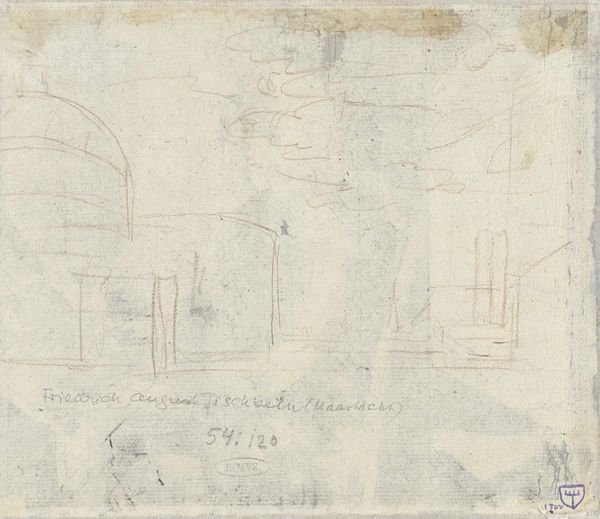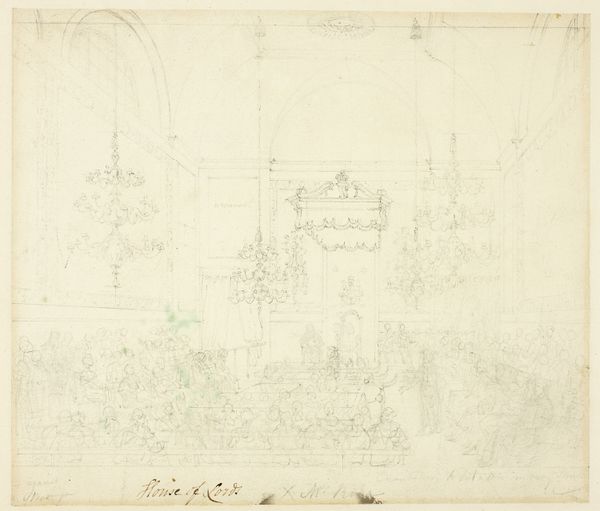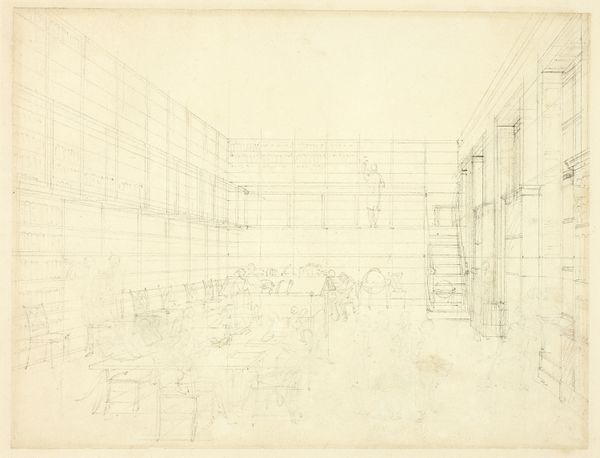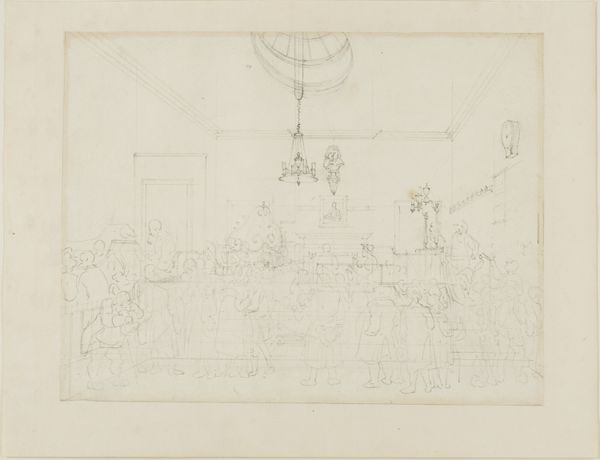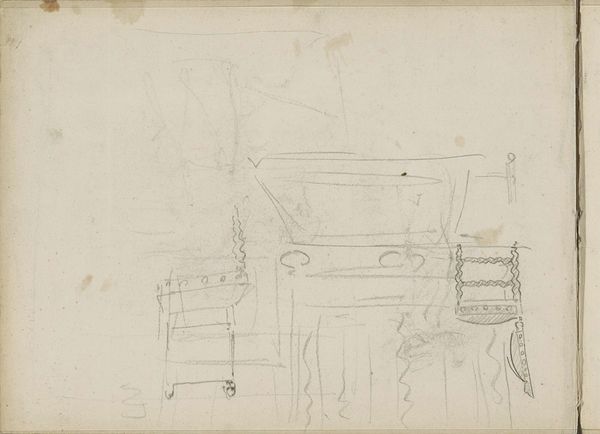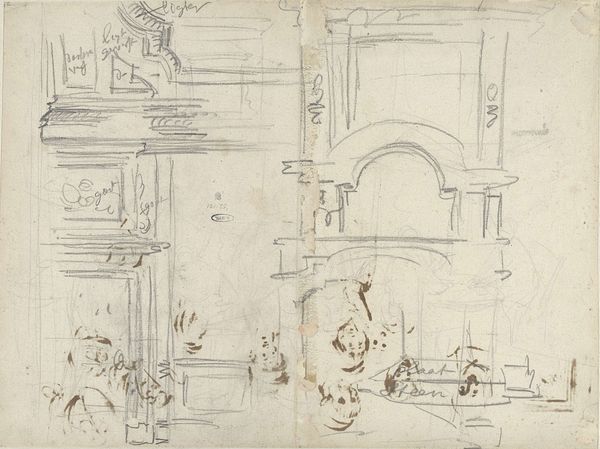
Study for Board of Trade, from Microcosm of London c. 1809
0:00
0:00
drawing, print, paper, pencil, graphite
#
portrait
#
drawing
#
neoclacissism
# print
#
perspective
#
paper
#
pencil
#
graphite
#
cityscape
#
history-painting
#
academic-art
Dimensions: 193 × 256 mm
Copyright: Public Domain
Editor: This is Augustus Charles Pugin's "Study for Board of Trade, from Microcosm of London," created around 1809. It's a drawing on paper, mostly graphite and pencil. It strikes me as a study in perspective and light, though somewhat sparsely detailed. What do you see in this piece, considered through a formal lens? Curator: The primary visual interest lies in Pugin's precise articulation of space and form. Observe the linear perspective; it rigorously organizes the composition, directing the viewer's eye deep into the room. The ceiling's elaborate design contrasts with the stark geometry of the table and chairs. Editor: The limited use of shading creates almost an architectural blueprint feel. Is this deliberate? Curator: Precisely. The restrained application of graphite serves to delineate form rather than evoke atmosphere. Note how the lines articulate the volume of each figure without conveying weight or texture. Do you perceive the rigorous construction in Neoclassical visual rhetoric? Editor: Yes, now that you mention it, the scene feels very staged and organized, almost like a theatrical set. Curator: Exactly! The visual composition reflects the Neoclassical emphasis on order, balance, and reason, visually manifesting an Enlightenment rationality in spatial representation. Editor: I see that now. Focusing on the formal aspects really highlights the artist’s structural intent. Curator: And consider how such visual organization itself could contribute to and mirror the conceptual frameworks that underscored spaces of power, civic planning, and governmental control. We appreciate the precision embedded in Academic Art practices through the perspective grid.
Comments
No comments
Be the first to comment and join the conversation on the ultimate creative platform.
